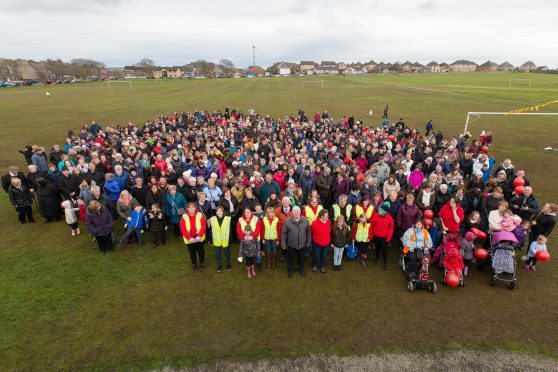More than 500 former hospital patients joined an unusual photoshoot yesterday to air their affection for their local health service – but also their fears for its future.
Patients from over 30 years gathered to support pressure group Caithness Health Action Team (Chat), which is fiercely opposed to what it considers the recent “downgrading” of the county’s maternity services.
And during the meeting, it emerged that one of Chat’s members is to be nominated as a candidate for the June election.
Its choice is expected to be identified later this week.
Chairman Bill Fernie said: “We can fire a shot over the Scottish nationalist government’s bows to show we’re taking our campaign very seriously.
“I know health is devolved to Holyrood but this will fire a serious shot at the Scottish Government to sort out what’s happening to our health service.”
Caithness, Sutherland and Easter Ross SNP MP Paul Monaghan could not be contacted for a comment last night.
Photoshoot organiser and Chat vice-chairwoman Kirsteen Campbell, said the event intended to make a visual impact demonstrating the sheer numbers of people thankful for treatment they had received at Caithness General over the past 30 years.
For picture purposes, those attending divided into 10 groups including women who had Caesarean Sections, or been the subject of maternity emergencies and those who had required general surgery.
Highland health board chairman David Alston has passionately defended the recent revision to Wick’s maternity services, saying he firmly believed the shake-up was the correct decision.
In 2015, NHS Highland lowered the threshold for sending expectant mothers to Raigmore Hospital in Inverness after the “potentially avoidable” death of a baby girl from the e.coli sepsis infection 40 hours after being born in Wick.
There have since been local protests as increasing numbers of expectant mothers are sent on a 100-mile journey to Inverness.
The Scottish Government maintains that it has invested widely in NHS services across the north “in response to changing patient needs and access to more specialist health service delivery.”
